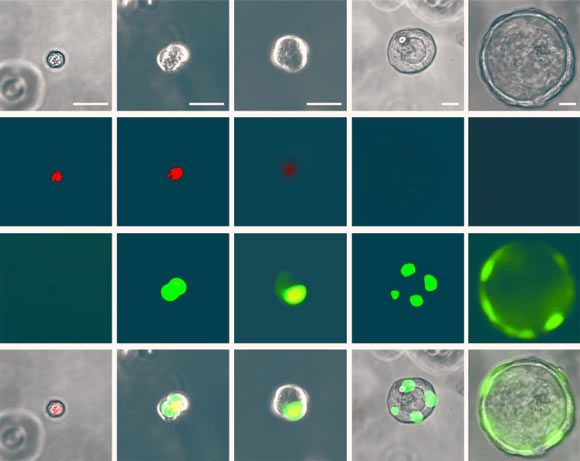Researchers from the Perelman School of Medicine at the University of Pennsylvania (USA) have identified a distinct cell line located deep within the human lungs, playing a crucial role in the treatment of many chronic diseases.
The newly discovered lung cells are named “respiratory secretory cells” – RASC. They are arranged along the branches of small airways, close to the alveolar structures where oxygen is exchanged for carbon dioxide (CO2).

RASC transforms into AT2 spectacularly when cultured in the laboratory – (Photo: Nature)
Notably, the research team led by Professor Edward Morrisey, Director of the Penn-CHOP Lung Biology Institute at the Perelman School of Medicine, found that these cells possess stem cell-like properties, capable of transforming into any cell type necessary for the normal functioning of the alveoli.
Thus, this unique cell type acts as a “reserve” for the human lungs, responsible for regenerating what is damaged within the alveoli due to disease or other impacts.
According to Sci-News, researchers also found evidence that cigarette smoking and chronic obstructive pulmonary disease (COPD) can disrupt the function of these special cells.
Therefore, a method to protect RASC cells and regulate the disruption of the natural regeneration mechanism in the human lungs would be an effective way to treat COPD, a disease that remains challenging for medical science worldwide.
One of the “identities” that successfully transforms from RASC is the AT2 cells, which are essential for keeping the alveoli healthy. AT2 cells have been known to become abnormal in COPD and many other lung diseases.
Another interesting point is that these shape-shifting cells may be a “unique asset” of the human species. Tests on mice found no RASC.
The study was recently published in the scientific journal Nature.




















































